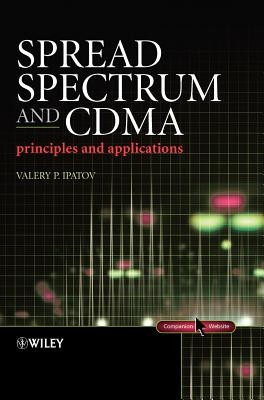
- We will send in 10–14 business days.
- Author: Ipatov
- Publisher: John Wiley & Sons
- ISBN-10: 0470091789
- ISBN-13: 9780470091784
- Format: 17.4 x 25 x 2.8 cm, hardcover
- Language: English
- SAVE -10% with code: EXTRA
Reviews
Description
Spread spectrum and CDMA are cutting-edge technologies widely used in operational radar, navigation and telecommunication systems and play a pivotal role in the development of the forthcoming generations of systems and networks.
This comprehensive resource presents the spread spectrum concept as a product of the advancements in wireless IT, shows how and when the classical problems of signal transmission/processing stimulate the application of spread spectrum, and clarifies the advantages of spread spectrum philosophy. Detailed coverage is provided of the tools and instruments for designing spread spectrum and CDMA signals answering why a designer will prefer one solution over another. The approach adopted is wide-ranging, covering issues that apply to both data transmission and data collection systems such as telecommunications, radar, and navigation.
- Presents a theory-based analysis complemented by practical examples and real world case studies resulting in a self-sufficient treatment of the subject
- Contains detailed discussions of new trends in spread spectrum technology such as multi-user reception, multicarrier modulation, OFDM, MIMO and space-time coding
- Provides advice on designing discrete spread spectrum signals and signal sets for time-frequency measuring, synchronization and multi-user communications
- Features numerous Matlab-based problems and other exercises to encourage the reader to initiate independent investigations and simulations
This valuable text provides timely guidance on the current status and future potential of spread spectrum and CDMA and is an invaluable resource for senior undergraduates and postgraduate students, lecturers and practising engineers and researchers involved in the deployment and development of spread spectrum and CDMA technology.
Supported by a Companion website on which instructors and lecturers can find a solutions manual for the problems and Matlab programming, electronic versions of some of the figures and other useful resources such as a list of abbreviations.
EXTRA 10 % discount with code: EXTRA
The promotion ends in 17d.11:56:43
The discount code is valid when purchasing from 10 €. Discounts do not stack.
- Author: Ipatov
- Publisher: John Wiley & Sons
- ISBN-10: 0470091789
- ISBN-13: 9780470091784
- Format: 17.4 x 25 x 2.8 cm, hardcover
- Language: English English
Spread spectrum and CDMA are cutting-edge technologies widely used in operational radar, navigation and telecommunication systems and play a pivotal role in the development of the forthcoming generations of systems and networks.
This comprehensive resource presents the spread spectrum concept as a product of the advancements in wireless IT, shows how and when the classical problems of signal transmission/processing stimulate the application of spread spectrum, and clarifies the advantages of spread spectrum philosophy. Detailed coverage is provided of the tools and instruments for designing spread spectrum and CDMA signals answering why a designer will prefer one solution over another. The approach adopted is wide-ranging, covering issues that apply to both data transmission and data collection systems such as telecommunications, radar, and navigation.
- Presents a theory-based analysis complemented by practical examples and real world case studies resulting in a self-sufficient treatment of the subject
- Contains detailed discussions of new trends in spread spectrum technology such as multi-user reception, multicarrier modulation, OFDM, MIMO and space-time coding
- Provides advice on designing discrete spread spectrum signals and signal sets for time-frequency measuring, synchronization and multi-user communications
- Features numerous Matlab-based problems and other exercises to encourage the reader to initiate independent investigations and simulations
This valuable text provides timely guidance on the current status and future potential of spread spectrum and CDMA and is an invaluable resource for senior undergraduates and postgraduate students, lecturers and practising engineers and researchers involved in the deployment and development of spread spectrum and CDMA technology.
Supported by a Companion website on which instructors and lecturers can find a solutions manual for the problems and Matlab programming, electronic versions of some of the figures and other useful resources such as a list of abbreviations.


Reviews